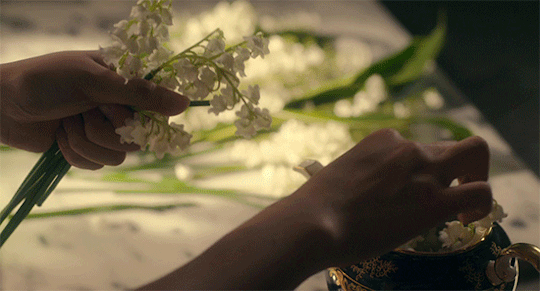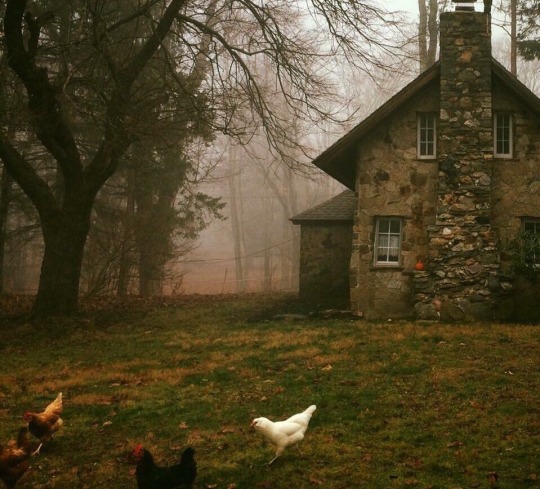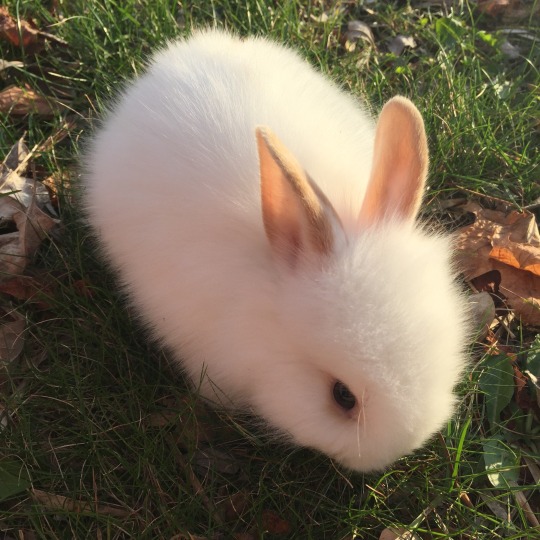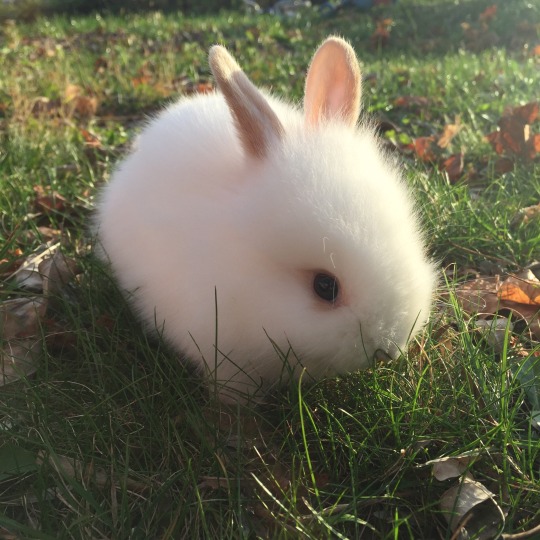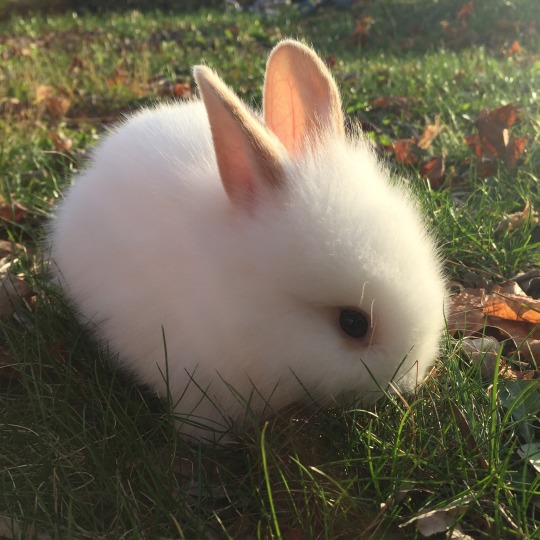THIS BLOG IS ANTIFASCIST. FUCK NAZI SCUM. GOOD NIGHT WHITE PRIDE. nouvelledecadence's side blog witchcraft ⭐ pagan ⭐ nature
Don't wanna be here? Send us removal request.
Video
“ Oh little autumn spirit “ // Dennis Johann Aydogan
Music: Gibran Alcocer - Idea 10
957 notes
·
View notes
Note
Yo! Hope you are doing well. Do you know of some good resources for someone looking into getting into magical practices? She is interested in plant and herbal stuff mainly
Yo!
I’m sorry this took so long to get to - I knew I was going to have to sort through a crap ton of posts to make this one, and I was feeling particularly lazy… But here we go!
Herb Safety
[Common Toxic Herbs and Their Effects]
[The Difference Between a Witch and an Herbalist] (tw: gif)
[Herbs to Avoid During Pregnancy]
[List of Poisonous Herbs]
[Poisonous Herbs] (tw: gif)
[PSA: Herbal Does Not Mean Take As Much As You Want!]
[Witchy 101: Herbs]
[Witchy 101: Herbal Safety & Hormones]
General Posts
[A Basic Glossary of Herbal Medicine Effects]
[A Basic Glossary of Herbalism Techniques]
[Beginner Witch Tips, Part Four: Herbalism]
[Herbal Preparations]
[Herbal Substitutes]
[Herbs for Spells : Grocery Store vs. Home Grown vs. Edible Wilds] (tw: gif)
[How to Store Your Magical Herbs]
[Magickal Folk Names for Herbs]
[Plant Care 101]
[Plant Tips from a Green Witch]
[Ten Mistakes New Herb Gardeners Make (and How to Avoid Them)]
Walking the Green Path:
[Part I]
[Part II]
[Part III]
[Part IV]
[Part V]
[What’s Wrong With Your Plants?]
Correspondence of Herbs
[Big Witchy Guide on Herbs and Flowers]
[Herbal and Plant Listing By Purpose]
[Herbal Chart by Use and How to Use Them]
[Herbal Correspondences]
[Herbs]
[Herbs and Their Uses]
[Herbs & Workings Correspondences] (tw: music autoplay)
[Herbs/Food/Plants by Purpose]
[Herbs ‘n’ Flowers]
[Magical Correspondences of Herbs, Roots, Flowers & Resins]
[Magickal Properties of Herbs]
[My Correspondence References]
[Plant and Herb Properties by Name Masterpost]
[Ultimate List of Herbs/Plants]
A Witch’s Herbal:
[Part 01 - Basic Herbs]
[Part 02 - Advanced Herbal]
[Part 03 - Baneful Herbs]
[Part 04 - Resin Collection]
Growing Your Own Herbs
[Beginner Garden Witch: Regrowing Crops from Table Scraps]
[An Introduction to Growing Poisonous Plants]
[Growing an Herb Garden] (an ask)
[Magickal Household Plant Master Post]
[Plant Witchcraft: A Beginner’s Guide to Growing]
Gathering Herbs
[The Etiquette of Herb Gathering]
[Harvesting Herbs]
[How to Harvest Your Magical Herbs]
Drying Your Own Herbs
[Drying Your Herbs] (tw: gif)
[Herbs and Gardening 101: Drying]
[How To: Dry Herbs]
[How to Dry Rose Petals the Lazy Way]
[How to Dry Your Magical Herbs]
[How to Master Drying Herbs in Your Oven]
Herbal Techniques
Essential Oils
[ABC of Carrier Oils]
[Carrier and Vegetable Oils]
Distillation of Essential Oils:
[Part 01]
[Part 02]
[Essential Oil Safety]
[Essential Oil Safety]
[Essential Oils and Aromatherapy Basics]
[Essential Oils are Awesome Witchcraft Components! They Can Also Fucking Hurt You]
[Essential Oils Masterpost]
Essential Oils Masterpost:
[Part 01]
[Part 02]
[Good Essential Oil Combinations]
[The Language of Aromatherapy]
[List of Essential Oils’ Correspondences]
[Magickal Uses for Essential Oils]
[New to Essential Oils? Here’s How to Get Started]
[Oil Safety]
Herbal Extracts
[Basic Extraction Techniques: Aqueous Extractions]
Incense
[Incense Blending: A Guide]
Infusions
[Botanical Infusions]
[Herbal Medicine: What is an Electuary?]
[Herbal Tea Remedies]
Oils
[How to Make Natural Herbal Oil]
[Make Your Own Floral and Herbal Oils]
Potions
[The Basics of Potion Making]
[Herbal Brews]
[Potion Herbs & Ingredients]
[Potions 101 Overview] (tw: gif)
Poultices
[How To: Make a Poultice]
Salves
[DIY: Herbal Salves]
[Herbal Salves]
Tinctures
[How to Tincture]
[Tinctures, Salves, and Oils]
[Tincturing Workshop]
So, yeah, there you are, I hope that helps!
3K notes
·
View notes
Text
An Leabhar na Draíochta
The Mori Witch’s Book of Magick
A collection of original writings by Rowan Méadhbh Keaney.
[Updated: 08-07-18]

Magick
Types of Magick
Binding [Witchcraft 101]
Curses vs. Hexes: What’s the Difference?
Necromancy [Witchcraft 101]
The Basics of Wards & Warding [Witchcraft 101]
Psychic Phenomena [Witchcraft 101]
General Info
Taglocks [Witchcraft 101]
Magick Oils
Making A Simple Protection/Negativity Repelling Sachet
A Brief Summary of the Major Arcana (Tarot)
Liminality & Liminal Spaces
Witch Bottles?
Astral Weaponry [Witchcraft 101]
The Basics of Astral Projection & Astral Travel [Witchcraft 101]
Herbs & Herbalism
10 Herbs to Keep Close By
Uses for Forget-Me-Nots & Lavender in Magick
83 Herbs and Their Magickal Properties
Correspondences of: Carrier & Essential Oils
Herbs and Things to Avoid During Pregnancy & Lactation [Witchcraft 101]
Divination
Palmistry: [Part 1] ✧ [Part 2]
How to Work & Calibrate Your Pendulum
Divination Drinks: Tea to Aid in Divining
Scrying [Witchcraft 101]
Tarot 101: Bonding With Your Deck ✧ Charging Your Deck.
Divination 2.0: Tarot Spreads
Rowan’s Cross New Year Tarot Spread.
Illuminate My Path Tarot Spread.
Removal of the Festering Limb Tarot Spread [a spread for cutting toxic ties].
Creatures
Let’s Talk Quickly About Bean Sídhe
Spells
Bath Magick
Roe’s All-round Cleansing Bath [Bath Magick]
“Bathe Me the Fuck Better” Bath Spell [sachet]
Healing
Minor Pain/Healing Spell
Spirit Work & Divination
Incense Blend (ft. Candle Magick) to Contact A Deceased Loved One
Jar Spells/Spell Bottles
Roe’s Foolproof Decoy/Entrapment Bottle
Curses/Hexes/Jinxes
All That You Love Will Turn to Nothing [curse].
Love
Open to Love: A Poppet
Chants & Incantations
A Chant for Luck!
Talismans & Amulets/Enchanting Objects
Amulets vs. Talismans
Regain & Maintain Your Self-Control
Tips, Tricks & Advice
The Mori Witch’s Tips & Tricks
Witch Tips: [X] [X] [X] [X]
How Do You Deal with the Negative Connotations Surrounding Witchcraft?
Why Protecting Yourself During Samhain is Important
Mugwort: WARNING!
Sigils & Sigil Magick
“My Positive Relationships Will Flourish” [sigil]
“I Cannot Be Broken” [sigil]
“The Traumas of My Past Will Not Trouble My Future” & “I Do Not Fear the Troubles or Frights That My Eyes Have Seen” [sigil(s)]
“I Am Not My Past; I Have Worth” [sigil]
“I Have the Power to Succeed” [sigil]
“I am in control.” [sigil]
“I hold the power of a storm in my heart.” [sigil]
“I am filled with motivation.” [sigil]
“All that you love; all that brings you joy, will bring you nothing but emptiness.” [sigil]
“Spirits are welcome here, on this night.” [sigil]
“I have an improved and active memory.” [sigil]
“I heal quickly.” & To ward off sickness and promote good health. [sigil(s)]
“I recall my dreams with clarity and ease.” [sigil]
“I am charming.” & “This day is a success.” [sigil(s)]
“Forest Demon.” [sigil]
“Brain fog will not cloud my mind.” [sigil]
“My mind is still; my mind is soothed.” [sigil]
“I commune easily with the dead.” [sigil]
“My problematic habits and behaviours are bound; they cannot resurface and do harm.” [sigil]
“The pains of my illness are easy to bear.” [sigil]
Potions & Elixirs
Roe’s Magickal Pick-me-up (for the tired witch)
Runes
Witches Runes [Part 1] ✧ [Part 2]
Paganism
Sabbats & Festivals
Sabbats: Samhain ✧ Beltane ✧ Lughnasadh ✧ Yule ✧ Ostara.
Pagan Festivals: Walpurgisnacht
A Samhain Special: Pumpkins!
Deities
Gaelic Deities: The Dagda ✧ Óengus ✧ Abarta
A Brief List of Well Known and Commonly Worshipped Pagan Deities
“How would one worship and invoke Lir and The Morrigan?”
Other
Celtic Tree Lore
Dumb Suppers [Paganism 101]
Brief Summary of Why Wicca and Witchcraft Are Not Interchangeable.
10K notes
·
View notes
Text
83 Herbs and Their Magickal Properties
Okay, so this is going to be a long text post so sit your cute butt down and get comfortable. You may want to make some tea or grab some kind of nourishment before you get comfortable because you are going to be here for quite a long time.

Czytaj dalej
13K notes
·
View notes
Photo
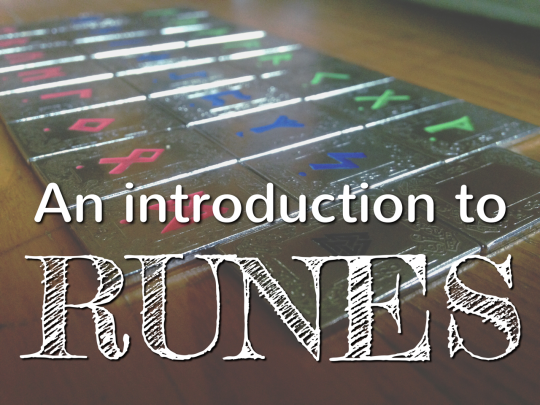
Y’all asked for it so y’all gonna get it! I’mma start off with the barebones essentials and work my way to basic definitions. Sit down on something comfy and get yourself your warm beverage of choice and maybe grab a notebook because here goes.
What are runes?
Runic alphabets have been around since about 150 AD and used as a writing system by a lot of Germanic languages. These systems were eventually phased out, slowly but surely, with the progressive Christianisation that started around 700-1100 AD. The three most commonly known (and used?) Are the Elder Futhark, the Younger Futhark and Futhorc.
Runes aren’t, themselves, broadly meant for divination, thought there are a few passages in the Eddas that mention Odin “finding” and using them.
Alright, so which alphabet should I use?
Whichever one you want! I prefer using the Elder Futhark, because it’s the first alphabet I learned and got familiar with, but that doesn’t at all stop you from using the Younger Futhark or Futhorc. I’d heavily suggest making sure you read up on the differences in each alphabet though; Ansuz, for example, won’t look the same, mean the same or even be called the same from one alphabet to another.
Familiarize yourself with each of them if you want/can, and choose based on your own preferences and criteria. Always work with what feels best for you!
But I’m not really familiar with Germanic traditions / I’m a baby witch, should or can I use runes for divination?
This is the concept that got my goat real good the first time. You do not, in any way, shape or form, need to be experienced to cast runes. This is a notion that is outdated and perpetuated by gatekeepers and exclusionists. No one gives a flying flip how long you’ve been practicing witchcraft, or if you even practice at all!
Divination should be seen as a tool to further yourself and/or your craft. It can be used by itself or in conjunction with other activities, practices or beliefs. I was 15 when I started learning about runes (dear god that was literally over ten years ago) and I had no idea what I was doing back then. I read up as much as I could about the system I was wanting to use and, once I was comfortable with it, I started doing small readings.
It shouldn’t matter how new or familiar you are to divination, rune casting or Germanic traditions. If rune casting feels right to you, you are more than free to use whatever divination method feels right to you.
What should I do before I start a reading?
As a Norse Pagan, I usually invoke my patron deities (Baldr and Loki, in this case), as well as Odin and Freyja, sometimes Gullveig/Heiðr because reasons. I have no idea whether or not this has any actual bearing on the reading itself, as mine were as accurate before I converted as they are now.
Making sure you’re in a quiet and/or comfortable space is also a good idea, even if that just means popping in some earphones and listening to something that makes you focus and feel calm.
This is also a good time to mention that cleansing your runes (stone, bone, wood or otherwise) is a very good idea. I typically do this with candles, incense, a bowl of water and a point of quartz for each element. I don’t do this nearly as often as I probably should, since most people suggest cleansing them after each reading… but, whatever, being lax with that hasn’t bitten me in the ass so far. So if you’re a spoonie, don’t worry: cleanse your runes when you feel they need to be cleansed, and that’s it.
Alright, I think I’m ready; how do I start reading?
Let me start by saying that the bullshit about never reading yourself? It’s just that. Bullshit. Do readings on yourself if you want to. Who the hell is going to stop you. Do whatever you want.
On that note, there are a few ways to cast runes, though these probably aren’t close to being the only ones:
Intuitively choosing the stones Lay the runes down on a flat surface and let your hand hover over them and pick out the ones that feel right. You can either pick them in order of the spread you’re using, or place the runes where you feel they belong on the spread.
Throwing the stones Make sure you have a large flat surface to work with (preferably the floor honestly) where you won’t drop, scatter or lose a rune. You can use a mat underneath, and read the stones that fall on the corresponding positions in the spread or circle. (You can find many of these with a quick google search, or make your own mat!) Otherwise, you can take the first stones you see facing up and lay those out according to your spread.
Picking them blindly Either you or the person you’re reading pull stones blinding out of a pouch, bag or other container, and lay them out according to the spread you’re using. Pretty straightforward.
If you can think of another method, literally nothing is stopping you from using that instead. The runes are acting as a universal translator for whatever it is you’re tapping into. They’re just a tool to receive a message. How you choose to receive that message is completely up to you!
So I’ve got my runes laid out, now what?
Now comes the fun part. I can only really give you a good run-down of the Elder Futhark, and though it’s a good starting point, I would highly advise you do your own research on whatever alphabet you want to use. Wikipedia is a great place to start, but don’t stop there: look at several different websites and lists and compare. Combine and condense the information for yourself, and get to learn the definitions and meanings for yourself!
ᚠ Fehu • catle wealth, money, hard work paying off, can represent spiritual wealth reversed: effort gone to waste, natural and/or financial loss, greed
ᚢ Uruz • ox physical strength and speed, great energy, courage, masculine reversed: physical weakness, illness, violence, misdirected aggression
ᚦ Thurisaz • thor reactive, destructive and/or defensive force, tendency towards change reversed: dangerous compulsions, betrayal and malice, lies, spite
ᚨ Ansuz • of the Æsir revelations, intuition, signs and signals, wisdom, power of words/names reversed: misunderstandings, delusions and vanity
ᚱ Raido • chariot physical/spiritual journeys, transition, seeing the bigger picture reversed: crisis, maybe due to stagnation, unwanted disruption
ᚲ Kaunan • torch creativity and inspiration, power of transformation, power of life reversed: instability, lack of creativity, false hope revealed, disillusionment
ᚷ Gebo • gift gifts in the form of sacrifice or generosity, contracts, partnerships reversed/opposed: greed, isolation and dependence, over-sacrifice
ᚹ Wunjo • joy comfort, pleasure, companionship, possibility of going over the top reversed: sorrow and alienation, growing distance, raging frenzy
ᚺ Hagalaz • hail wrath of nature, destruction for the sake of creation, natural order reversed: natural disasters, powerlessness, suffering
ᚾ Naudiz • need strength/growth from hardships, survival, determination reversed: deprivation and emotional starvation, constraints/restraints
ᛁ Isaz • ice challenges and frustration, psychological block, anticipation reversed/opposed: can oppose other runes with malice and treachery
ᛃ Jera • good year hard work is fruitful, peace, happiness and relief, breaking the cycle reversed: sudden setbacks and bad timing
ᛈ Pertho • vagina secrets, mysteries, undiscovered abilities, choosing your own path reversed: stagnation, isolation and loneliness
ᛇ E/ihwaz • yew tree strength, stability, endurance, trustworthiness, your goal is realistic reversed: confusion, dissatisfaction and weakness of the mind
ᛉ Algiz • elk shield, the instinct to protect yourself/others, connection to the gods reversed: hidden dangers, loss of link to the divine, turning away
ᛊ Suwilo • the sun success and goals achieved, you have the power you need to succeed reversed/opposed: deception, false goals, gullibility, divine wrath
ᛏ Tiwaz • tyr honour and leadership, authority, success in competitions reversed: artistic block, over-analysis and sacrifice, imbalance/conflict
ᛒ Berkana • birch tree fertility in a broad sense, personal/physical growth, new beginnings reversed: family/relationship issues, anxiety over loved ones, abandon
ᛖ Ehwaz • horse steady and gradual progress, teamwork/loyalty, relationships reversed: reckless haste and its consequences, restlessness
ᛗ Mannaz • mankind the self, the human race, your attitude toward others and vice-versa, social awareness, altruism reversed: mortality, self-deception, cunning and manipulation
ᛚ Laguz • water literal/metaphorical flow, imagination, the unknown, chance of loss reversed: confusion/uncertainty, may be making the wrong choice
ᛝ Ingwaz • probably freyr warmth and love in general, tying loose ends, relief, freedom to move reversed: moving without change, fruitless effort, helpelessness
ᛞ Dagaz • dawn breakthroughs and clarity, security, power to change and grow, the ideal reversed/opposed: endings and coming round full circle
ᛟ Othila • inheritance ancestral property, what is most important, spiritual heritage and safety reversed: slavery, homelessness, bad karma, what one is unwillingly bound to
Phew! What a list. These are just brief descriptions and meanings that I’ve been able to compile and condense over the years.
But, what does “opposed” mean?
I see where you’re coming from. As a baby diviner, I, also, was confused by this. But let me explain how I’ve come to understand it!
Sometimes, if you’re doing a set spread, you’ll have a spot for things like, “what will oppose you”, or “what you need to avoid”. Things like that. If, say, a rune like Suwilo was found in something like that, you’d want to try and keep a sharp mind to avoid deceptions or letting yourself be too gullible.
When runes don’t have a reversed form, their position in your spread will usually determine what they mean. (Though really this is true for literally any rune.)
Anything else I should know?
The best advice I can ever give anyone is to always do what you feel is right. If you find yourself wondering, “Should I do this? Is this right?” If you question yourself at all, you should probably not to the thing and go with something else.
It’s also important to mention that the names I have for the runes may not be the ones that you’ve learned to know them by; a lot of runes can go by different names depending on who you ask and where you look. Do your research, and know the runes by the names you feel are best! (And preferably historically accurate.)
As always, if you have any questions regarding runes and how to read them, please ask me! My ask box is literally always open and almost always empty.
ᚺᛖᛁᛚᛚ ∙ ᛟᚲ ∙ ᛋᛇᛚᛚ
22K notes
·
View notes
Text
🎄🔥Nordic Holidays🔥🎄
Let me start off by clarifying that these are the Norse holidays I personally celebrate. I have it split up into major holidays(holidays I try not to miss aka major holidays) and minor holidays(Smaller celebrations, I might not even celebrate these, etc.). This information will vary from person to person, you can celebrate whichever holidays however you want! Enjoy ~
✨Major✨
Jól
Jól otherwise known as Yule/Yuletide is a Nordic holiday celebrated between sundown on the Winter’s Solstice for a following twelve days(now you know where the Christians got it). It is also during Jól that the Wild Hunt takes place, Óðinn rides out with his dead, elves, or the dwarves may ride out across Midgard. Seeing the Hunt was thought to bring famine, plagues, and war but offerings of food and gifts could be left out for blessings and prosperity. Jól was said to mark the return of Baldr from Helheim and the loosening of grip of winter of the Earth.
There numerous references to Jól in the sagas including Skáldskaparmál, Heimskringla, and poetry written by the skald Eyvindr Skáldaspilli which when translated reads:
“again we have produced Yule-being’s feast [mead of poetry], our rulers’ eulogy, like a bridge of masonry”. Most of these references testify to Jól being celebrated with blóts, feasting with family, drinking, gift giving, and dancing.
To be more specific, you can celebrate the twelve days of Jól by being hands on in your devotion! This was traditionally a time of year that was largely devoted to baking, finishing the mead making process, and hand making decorations and offerings to the heathen home and gods!! There was typically at least one julbord(feast) and an animal sacrafice.
For example, straw animals in the shape of goats(Þórr), stars, boars(Freyr), horses, and ravens(Óðinn) were made and hung up around the house or a Jól tree! Yessss, that was something that German immigrants brought over to the U.S. The Jól tree was traditionally a tree outside that was decorated and offerings were left at in honor of Yggdrasil! You can also make wreaths, garlands, and woven rugs or wall hangings!
The first night of Jól is typically called the Mothernight, this was in honor of the All Mother Frigg and the Disir. The first night(the longest night) is supposed to be symbolic to the rebirth of the world from winter. This is the perfect night to start on some weaving or crafts! Frigg is known for her weaving.
Disablót
Disablót was a sacrificial holiday(blót) in honor of the female deities, women, disir and valkyries. It’s purpose was to enhance the upcoming harvest and prepare the grounds for sowing.
It is mentioned in Hervarar saga, Víga-Glúms saga, Egils saga and the Heimskringla. This celebration still lives on in the form of an annual fair called the Disting in Uppsala, Sweden(I really want to go to this). There’s a lot of debate to when the holiday was originally celebrated because the sagas all are slightly different. However, it is currently celebrated at the end of February by Sweden!
It was around this holiday that the first furrows were plowed in the fields and that there was a feast of new beginnings.
Nordic folk customs would include getting ready for the gardening season, preparing for the gardening/farming season ahead, and making a feast for your loved ones and female deities you work with.
Sigrblót
Sigrblót also known as Summer Finding or Ostara is the celebration of the spring equinox and welcoming good weather. It is a celebration of the rejuvenation of the earth, fertility, and growth.
This is a holiday often used to celebrate the Germanic god Ēostre, the embodiment of springtime and life, Iðunn, god of youth and renewal, and Frigg/Freyja, for their key elements in fertility magic. Is more commonly seen in modern days as a celebration of the renewal/awakening of the Earth(Jörð), the deities, and life. It is also a celebration to welcome joy and light into one’s life.
Nordic folk custom would include a large bonfire, smorgasbord(as always), baking sweets, and honoring the gods mentioned above or ones important to you this holiday.
Midsummer
Midsummer is probably the second biggest celebration next to Jól. It is pretty much just the celebration of the summer solstice and can also be celebrated in hopes of a good harvest at the end of fall.
This holiday is attested to in the Ynglinga sagas and has long been a passed down celebration. Folk custom for celebrating would be large bonfires, speeches, smorgasbord, dancing around a majstång(traditionally for fertility), lots of drinking, and galdr. This is another holiday with a lot of hands on folk tradition; wreath making, kindling fires, making toy viking ships of wood and filling them with offerings to be burned, burning corn figures, adorning homes, halls, and the fields with fresh flowers and greenery.
A lot of of historians believe this is a particularly good time of year to make blessings to Baldr. This was also the time of year for sailing and war. With crops planted at home, vikings would set off to go to other lands.
Freyrfeast
My favorite holiday!! There is no actual surviving name for this beast but it’s believed to be held around the star of August and most modern Norse pagans celebrate it on August 1st. The Óláfs saga Tryggvasonar en mesta has an account of a priestess of Freyr traveling across Sweden at the start of winter with a picture of his god as a sacrifice for fertility and to honor him. Traditionally it’s a celebration of the first harvest where the primary god honored is Freyr with Sif and Þórr also celebrated as gods of harvest.
Traditionally the very first sheaf of grain harvested(I use my first bundle of lavender) is bound and blessed as an offering to the aforementioned deities and spirits of the field.
Folk customs include decorating the village well and springs, holding a grand feast of the gathered harvest, and baking a bread in honor of Freyr to give him at the end of and then plit among family. Preserving meats and vegetables was also done along this time of year and is a great time to start new batches of mead for upcoming blóts.
Haustblót
This is the celebration of the Autumn Equinox, the second harvest of the season, and when Norse folk would start preparing for winter by bringing livestock + stored food inside. It is referenced to in the Ynglinga sagas as well as the Eddas. It’s not as celebrated in modern times but farmers and agriculturalists still celebrate it and you can too!!
It is another joyous holiday celebrated with grand bonfires, large feasts, drinking, and dancing. It is believed that villagers would cast the bones of their slaughtered cattle on the flames to help them survive the winter.
There is a belief that once the village fire and all other fires were extinguished the families would go back their homes and light their hearth from the common village flame, bonding the community! I don’t know if this true but I’ve heard the story a few times and I honestly love the idea of it.
Vetrnætr/Álfablót
Otherwise known as Winters Night(or Samhain). This is the celebration of the last harvest, honoring of the landvættir, ancestors that protected the land through harvest, the vanir, paying respects to Death, and the welcoming of winter. Vetrnætr and Álfablót are celebrations of the same holiday but Álfablót is a blót that’s held privately in the home on the day of Vetrnætr.
Similar to Freyrfeast, for Vetrnætr the last sheaf of wheat/grain was bundled up and blessed and often given as an offering to Óðinn and his dead setting out for the Wild Hunt. It was believed with the start of the Wild Hunt the dead could return to the places where they had lived and a large feast, celebration, and fire were commonly used in their honor.
This was also a time for serious contemplation of death. To the Norse people, death was always around the corner and was viewed as a natural part of life. Death wasn’t viewed as negatively as it is in modern times but rather the Norse lived their lives in a way to live & die with honor, so their future ancestors would have something to celebrate on this day.
Álfablót in particular was typically run by a woman but we’re past gender norms now so whoever is comfortable running a ritual do it. It is a sacrifice to Freyr and the elves of Alfheim, in honor of the families ancestors, the life force of the family and the hearth, and is believed to also be a ritual for fertility. It is done the night of Vetrnætr.
Minor
These are not necessarily minor, they are just not holidays that I always keep up on, don’t celebrate, days of remembrance, etc. There are definitely more Scandinavian holidays I’m not including because I’m not knowledgeable on them all and they’re not as widely celebrated(like celebrating Flag Day in America).
January 19 - Þorrablót is an Icelandic midwinter feast in honor of winter and Þorr which contains song, story telling, and traditional Icelandic foods like blóðmör and Brennivin. It is typically celebrated during Þorri February 2 - Barri is the celebration of the union between Freyr and Gerd and a celebration of fertility and the earth. February 9 - Remembrance for Eyvind Kinnrifi, he refused to convert to Christianity so Olaf Tryggvason tortured him to death. March 28 - Ragnar Lodbrok Day! Cheers to one the most legendary Vikings in history, King of Denmark and Sweden, and raider of Paris. April 31st-May 1st - Waluburgis Night, a celebration of the saint Valborg a nun who was the niece of Saint Boniface. May 9 - Remembrance for Gudrod of Gudbrandsdal, whose tongue was cut out by the Norwegian king ‘St. Olaf’ for speaking out against the tyranny of the Christian Tryggvason, and urged others to resist him and continue worshiping the old gods. May 20 - Frigg Blót! This actually a fave but it’s not really major so I’m keeping it down here. It’s a celebration of warmth and spring. Traditionally the time of year to go camping, hold a bonfire, and perform a blót for Frigg and honor her as the All Mother, pray for good blessings and health to those of your hearth. June 8 - Lindisfarne Day: It’s believe that on this day in 793 CE three Viking ships raided the Isle of Lindisfarne which is marked as the start of the Viking age. July 9 - From the Laxdaela Saga, it is a day of Remembrance for Unn the Deep Minded, she was well-known and respected cheiftan in Iceland. October 8 - Day of Remembrance for Erik the Red, founder of Greenland. October 14 - Vetrablót is a celebration of the harvest and honors Freyja as the god of fertility and honors the disir as well. November 11 - Feast of the Einherjar, a holiday where the fallen heroes of all the halls(Valhalla, Fensalir, etc.) are remembered. November 27 - Feast of the winter and hunt gods Ullr and Skadi, also a day to celebrate Weyland one of the greatest Germanic craftsmen.
Tip Jar | Patreon | My Shop | Instagram
4K notes
·
View notes
Text
WRECK THIS GRIMOIRE
Partially this is just a list of prompts, partially you could absolutely make a functional wreck this grimoire out of it. Blank pages are suggested, and some of these require taking the page and destroying it or something similar, so I recommend either a. making the pages single sided or b. writing them all down first and seeing which ones need blank backs so you don’t destroy something you wanted to keep.
If you have anything else to add, feel free to add it to this list or your grimoire!
And if you are feeling kindly, you can donate to my ko-fi!
1. Write a protection spell for this grimoire.
2. Press your favorite flower here, and write down its correspondences.
3. Drip different colored wax here, and write down the color meaning.
4. Press healing herbs here, write their names and uses. If needed, use them, and replace.
5. Rub different dirts here and say where you got them, and their uses.
6. Make full moon water. Write a spell for growth on this page. Dip this page in the full moon water, and when it dries keep the spell near you, in your wallet, purse, backpack.
7. Fold this page into an envelope and put lucky herbs inside. Write a luck spell on the front of the envelope, imbue your intent, and then burn the envelope.
8. Write a song or poem that is important for your craft. Write your Craft playlist.
9. Make sigil components on this page.
10. Make sigils on this one.
11. Write a love spell. Use this page to wrap up a rose quartz and sleep with it under your pillow.
12. Make a collage of something important in your craft – nature, the moon, technology, etc.
13. Meditate on this blank page, or a scrying mirror, or a crystal, and write down what you see.
14. Make a pendulum circle, including Yes, No, and Maybe in different directions. Ask questions, and write down the answers. You can make a pendulum out of a needle and thread, and put the needle in this page to keep it safe.
15. Write a glamour spell, and mark this page with whatever you will use for the glamour – lipstick, paint, dirt.
16. Throw tea or coffee onto this page. Fold in half to make a print. Read the image and write down what you see.
17. Write a banishing spell. Bury this page in a jar of salt, and seal it with wax. Put in a dark place.
18. Make a collage of your favorite celebration, and use it as altar décor or wall art. Make a collage for all celebrations, if you want.
19. Make new moon water. Write a spell for a fresh start on this page. Dip this page in the new moon water, and when it dries burn it.
20. Draw herbs and write correspondences.
21. Draw crystals and write correspondences.
22. Draw astrological signs and write down traits.
23. Look up your own birth chart and write down all information. Write down what all of the positions mean. If you have to look something up, write down what that means too.
24. Use a couple pages as a dream journal – write down dreams when you have them, and analyze them. Write down what the imagery means to make a sort of personalized dream glossary.
25. Draw herbs and crystals you use the most and write down their correspondences.
26. Write a spell for your garden or houseplants for growth – or, write a spell for personal growth. Make a page into an envelope. Put in your earth-friendly ingredients and the spell, and bury it in your garden, in a pot, or near your home. For added growth, put in some seeds of local flowers. Remember this spot. It’s your natural altar now.
27. Make a page or two into a transportable altar. Draw designs, glue or sew down cloth, paste in things that remind you of your deity. If you want, make an altar for all of your deities.
1K notes
·
View notes

